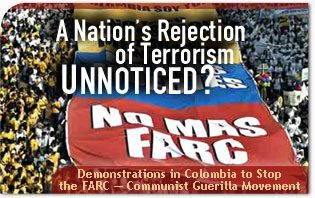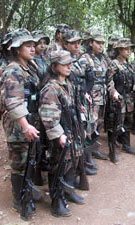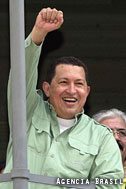 The massive protest had everything to grab the major headlines — drama, numbers, human interest, and even an Internet hero-organizer. It was also good news with a striking and timely anti-terrorist theme.
The massive protest had everything to grab the major headlines — drama, numbers, human interest, and even an Internet hero-organizer. It was also good news with a striking and timely anti-terrorist theme.
However, this smashing success story simply did not seem to inspire much commentary or encouragement. Although the wires carried the story, the full drama of what took place or its consequences appear blunted.
The February 4 event was a worldwide protest held by nearly 5 million Colombians. And the target of this massive protest? The Revolutionary Armed Forces of Colombia or FARC as it is so infamously known.
Nowadays, FARC could hardly be considered “armed forces” but rather the remnants of a once-formidable Marxist guerrilla organization that has terrorized this Andean nation for decades. It is the military wing of the Colombian Communist Party.
As a “military” group, the group has fallen on hard times. It holds no national territory as its own. Its “tactics” consist of a gangster/terrorist mix of bombings, murder, mortar attacks, drug-running, kidnapping, extortion, hijacking, and ambushes of conventional military forces.

By taking energetic measures against them, the real Colombian Armed Forces have steadily reduced the once powerful group to scattered ragtag groups of ruthless outcasts. Suffering from increasing desertion, the group now relies on narcotics and kidnapping ransoms to fund its ill-fated Marxist experiment. Nearly 800 people, including three Americans, are its only real trump card as they cruelly wallow in jungle hideouts or safe houses where they are often used as human shields.
The world-wide protest was the brainchild of engineer Oscar Morales who hatched the idea to mobilize a protest march using the popular Facebook social networking Internet site. Nearly everyone in Colombia knows someone who has been victimized by FARC. The idea spread like wildfire. An estimated 4.8 million Colombians took to the street — well over ten percent of the population of this country of 44.3 million inhabitants. Nearly two million jammed downtown Bogotá alone. Thousands of other Colombians got together in 130 cities around the world including communities in the United States.
Nothing could be clearer. What was organized was a national repudiation of this notorious terrorist group. Colombians are tired of the terrorist organization that has made their lives miserable and kidnapped or killed their loved ones. They favor the policies of President Alvaro Uribe whose popularity is now at its zenith with an enviable 81 percent approval rating. The overall message was the same seen on many of the huge banners at the rallies: No More FARC!
Such a public repudiation would usually be enough to destroy the credibility of any normal organization. The problem is that FARC is not a normal organization — it is a Marxist guerrilla group that lives off its Che Guevara mystique outside the country. As followers of the discredited communist ideology, it still considers itself as a national liberation army but with typical Marxist savvy its leaders know that it gains much more from its press releases than from its humiliating battlefield defeats.
Thus, it is no surprise that many newspaper stories that appeared about the rallies failed to notice the unprecedented nationwide repudiation of FARC. Some stories, for example, reported “thousands” of protesters while others mention “millions” — but not the nearly five million that appeared worldwide.
As if unable to read the huge signs at the protests, other stories characterized the rallies as not against FARC but simply kidnapping, violence or killing. The more leftist pro-FARC press even downplayed the spontaneous Internet-generated marches as government-manipulated while others echoed the sentiments of Colombia’s leftist politicians who characterized the marches as expressions of “hatred and racism” that would hinder “dialogue.”
When FARC loses on the battlefield of Colombian public opinion, it must compensate on the world stage. Instead of recognizing the group’s unpopularity, pro-FARC supporters worldwide are doing everything possible to pump up its sagging image.

Venezuelan president Hugo Chavez, for example, is calling for the international community to recognize FARC as “armed forces” and asked the European Union to take the group off its terrorist list. Others are calling for negotiations exactly in the moment when the movement’s military defeats are becoming more apparent.
FARC itself is orchestrating the emotionally-charged release of three more hostages through the saving mediation of Hugo Chavez. It is interesting to note that FARC garnered support at last November’s School of the Americas protest held at Fort Benning, Ga. The pro-FARC propaganda machine still manages to function.
Meanwhile, the repudiation of FARC by an entire nation should not go unnoticed. Five million Colombians have spoken. It is time for the rest of the world to join with them by repudiating FARC and denying them their privileged place on the world stage.
